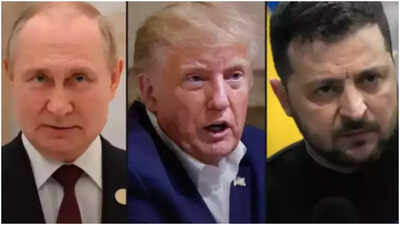ARTICLE AD BOX

US President Donald Trump said on Sunday aboard Air Force One that, for now, he was not considering a deal to allow Ukraine to obtain long-range Tomahawk missiles for use against Russia.
Trump was cool to a plan for the United States to sell Tomahawks to NATO nations that would transfer them to Ukraine, saying he did not want to escalate the war. His latest comments to reporters indicated he remained reluctant. “No, not really,” Trump told reporters as he flew to Washington from Palm Beach, Florida, when asked whether he was considering a deal to sell the missiles. He added, however, that he could change his mind. He and Nato Secretary General Mark Rutte had discussed the Tomahawk idea when they met at the White House on October 22. Rutte said on Friday that the issue was under review and that it was up to the United States to decide.
Is Russia behind this decision?
Earlier, Russia had raised the issue of Washington supplying Tomahawk missiles to Ukraine and warned that such military support could harm US–Russia relations and adversely affect any peace process.
The US President later told journalists at the White House that he had spoken to Putin about Tomahawk missiles. “I did actually say to him, ‘Would you mind if I gave a couple of thousands of Tomahawks to your opposition?’ I did say that to him,” Trump told reporters, adding that Putin did not appear to like that idea. “What do you think he’s [Putin’s] going to say, ‘Please sell Tomahawks?’ No, he doesn’t want Tomahawks to be supplied to Ukraine,” he added.
What is Tomahawk missiles?
According to US defence information, Tomahawk missiles were developed in the 1970s. They are long-range cruise missiles launched from ships or submarines and are generally used for long-distance attacks. The Pentagon’s budget documents state that the missile can make “deep-strike” attacks on land and “uses a combination of inertial navigation, GPS, and terrain contour matching (TERCOM) or Digital Scene Matching Area Correlation (DSMAC) for precision guidance”. Tomahawks fly at supersonic speed at low altitudes – about 30 metres off the ground – and have a range of more than 1,250–2,500 km. They usually carry conventional warheads but can also carry nuclear ones. The US, United Kingdom, Netherlands and Australia have all used these missiles in combat. So far, the US has launched more than 2,300 Tomahawks from its ships and submarines during operations in Syria and Libya, among others.
Will not giving missiles to Ukraine weaken its fight against Russia?
Possibly yes. The missiles’ long-range precision would allow Kyiv to strike Russia’s critical energy infrastructure, a key pillar of Moscow’s war economy, according to CSIS. A sustained campaign targeting oil and gas facilities could weaken Russia’s ability to fund and supply its war, potentially forcing it to negotiate. However, analysts caution that a handful of missiles won’t shift the balance — hundreds would be needed for meaningful impact. Even then, success would depend on consistent, focused strikes and the indirect effects trickling through Russia’s economy and public pressure.

 6 hours ago
7
6 hours ago
7








 English (US) ·
English (US) ·